Last year, I wrote an article that covered the release of the CWC 1983 Quartz Royal Navy Diver reissue. Shortly after, I purchased the watch, and subsequently called it my absolute favorite watch purchase of 2019. Reviews like this aren’t common on TBWS. We don’t typically review watches that we own—especially if they stay longterm. We also aim to be critical, unapologetic, and fully transparent in our thoughts. In my mind, this is the best, no-nonsense quartz dive watch you can buy today and the easiest gateway to the wide world of British military watch history. There’s a lot to cover… so let’s get to it.
CWC—or Cabot Watch Company—was started by Ray Mellor (former UK Managing Director for Hamilton) in 1972 in order to maintain MOD contracts after Hamilton went under. Named after the navigator and explorer John Cabot, the watch company went on to produce the Royal Navy Diver, an automatic dive watch that replaced the Rolex Milsub in 1980. This brings us to one of the most fascinating points about CWC, and that’s the fact that these early 1980s examples (mechanical and quartz) are some of the rarest and most highly-valued watches in the military watch collecting community—even harder to find than the Rolex Milsub, in many cases.
Beautifully, the design stems from the DEF STAN 66-4 [Part 1] Issue 3 spec pictured below, an elegant MOD spec followed by other MOD suppliers at the time; like Precista, Omega, and more. For more information about this point in CWC watch history, I highly recommend a video by the YouTube channel “Interesting Watches.” You won’t regret it.
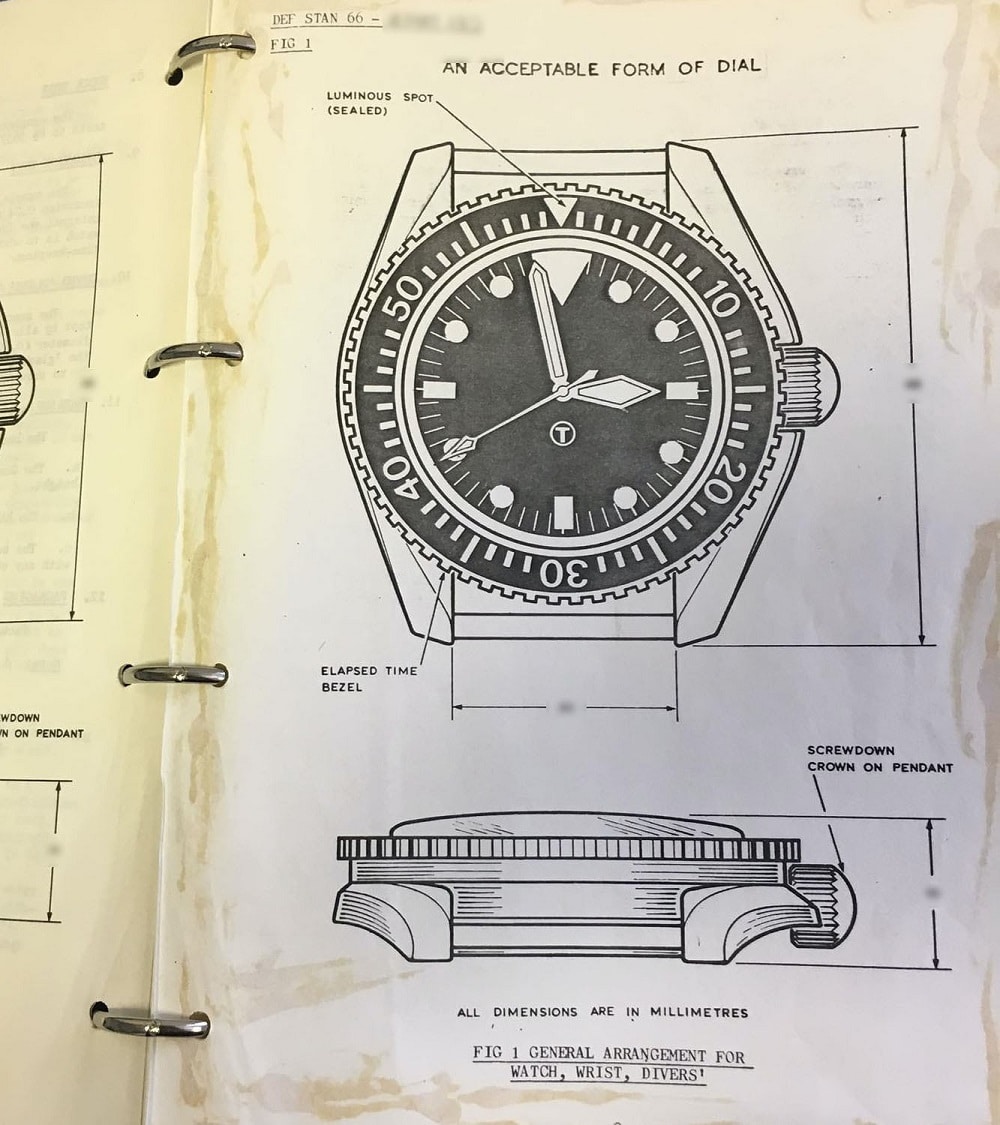
The Case
As mentioned above, the asymmetrical design was dictated by a MOD spec. It’s a common trait among military watches and you even start to see the feature as you break into the manual winding chronographs produced by brands like Hamilton and Newmark. Seiko is another expert, and as I interact with this watch, I’ve come to the conclusion that I’m a total sucker for asymmetrical cases. The case itself is around 41mm in diameter (45mm including the crown) with fixed spring bars and a 20mm lug width. Water-resistance is 300m (beefy screw-down crown with huge crown guards) and this version features a fully-polished case. As the previous owner of a Rolex Submariner 14060, I’d say the proportions and wearing experience are very similar.
But, in many ways, the glossy acrylic bezel is the star of the show. The originals came with bakelite, and this is about as close as you’ll get to a vintage example today. It’s a 60-click operation with nearly no play and it features fully lumed 10-minute intervals. We get full graduations throughout the dial and bezel, and the entire package screams utility. There’s nothing like this spec out there in the watch world today. Legibility is no concern, especially with those massive, lumed sword hands and the high-contrast dial with minimal text. Quick note: while we do also get a “circle T,” it’s important to know that the dial is equipped with SuperLumiNova, not Tritium like the older versions. This is probably one of the aesthetic choices folks will take issue with along with the vintage color tone throughout the hands and indices.
The Dial
With a nice, nearly matte texture, the dial offers a quick way to read the time without any excess information. The indices are bold and three-dimensional with a delightful vintage color tone. With the lights out, lume is spectacular. I often find myself accidentally falling asleep with this watch and waking up in the middle of the night, only to be greeted by an intense glow from the hands and indices. The seconds hand ticks away and hits the marks with average accuracy, but it doesn’t really cause huge concern for me. Finally, with a 3, 6, 9 layout and minimal text, this is one of the coolest dive watch dials around—even the CWC logo is inconspicuous, minimal, and 100% utilitarian.
The Strap
The CWC 1983 Quartz Royal Navy Diver reissue ships with a branded Phoenix NATO strap. It’s about as basic as it gets, but it really works for some people. Again, the fixed spring bars and 20mm lug width really make this watch a blast if you’re into nylon straps. I’ve even seen folks rock this watch on open-ended leather straps. For me, you’ll usually find this watch on a grey or modern “Bond” style BluShark NATO strap.
The Movement
Let’s face it—this is a grab n’ go quartz watch, and I wouldn’t have it any other way. I don’t care about jewels, how pretty the seconds hand looks as it ticks away, or even the daily variance in the watch’s accuracy. I only say that because it’s an ETA quartz movement, and I’ve seen numbers around -0.3 to +0.5 sec/day at temperatures between 20-30 C. The ETA 955.122 inside does, however, have a day/date feature and it is a little awkward to feel that thing switch over as I’m setting the time on a no-date watch. No big deal though. Battery life is about six years, and that’s all I really care about.
Final Thoughts
I don’t really have much to say, except at this point, we’ll have to talk about price. At £899, or around $1,100 USD, this might be a tough pill to swallow if you’re a quartz-critical collector. I do find this to be the only sour point when evaluating the watch, but this is how I look at it. The Rolex 5517 is my ultimate, unattainable grail. I’ve spent so much on homages, tribute watches, and microbrands emulating this look, and I broke that price range a long time ago. I wish this CWC was around, in this iteration, a few years ago. The watch offers you an opportunity to cut through the crap and get a modern version of a watch that established and defined a new era in military watch history—straight from the same manufacturer.
I hope that CWC continues to explore their history, as they release new iterations of watches that defined the brand in the past. For now, I’ll continue to enjoy this as a “forever watch.” But, that newer 1987 SBS Reissue is looking mighty tempting… hmmm, until next time.

Co-Founder & Senior Editor
Michael Peñate is an American writer, photographer, and podcaster based in Seattle, Washington. His work typically focuses on the passage of time and the tools we use to connect with that very journey. From aviation to music and travel, his interests span a multitude of disciplines that often intersect with the world of watches – and the obsessive culture behind collecting them.
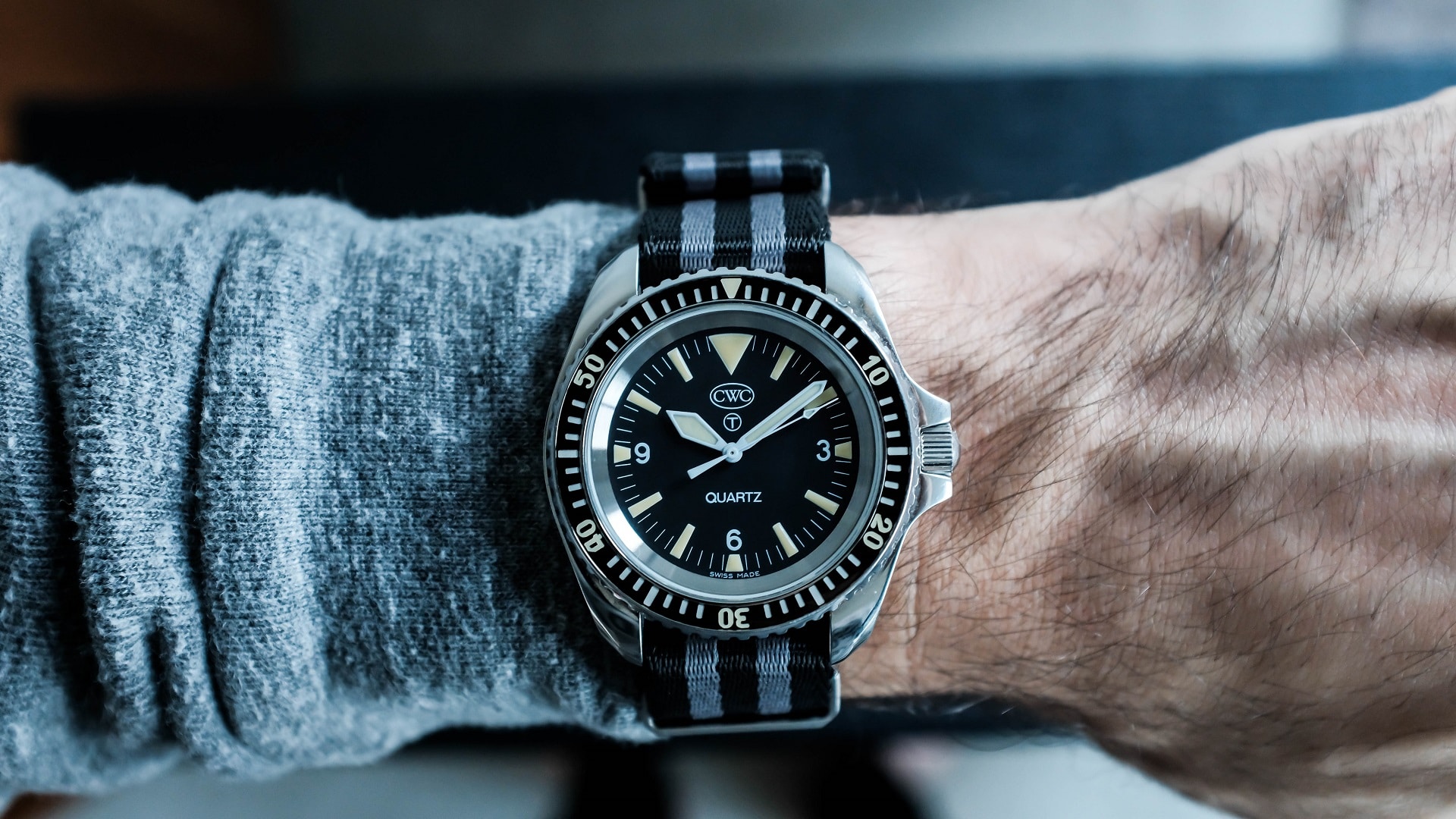
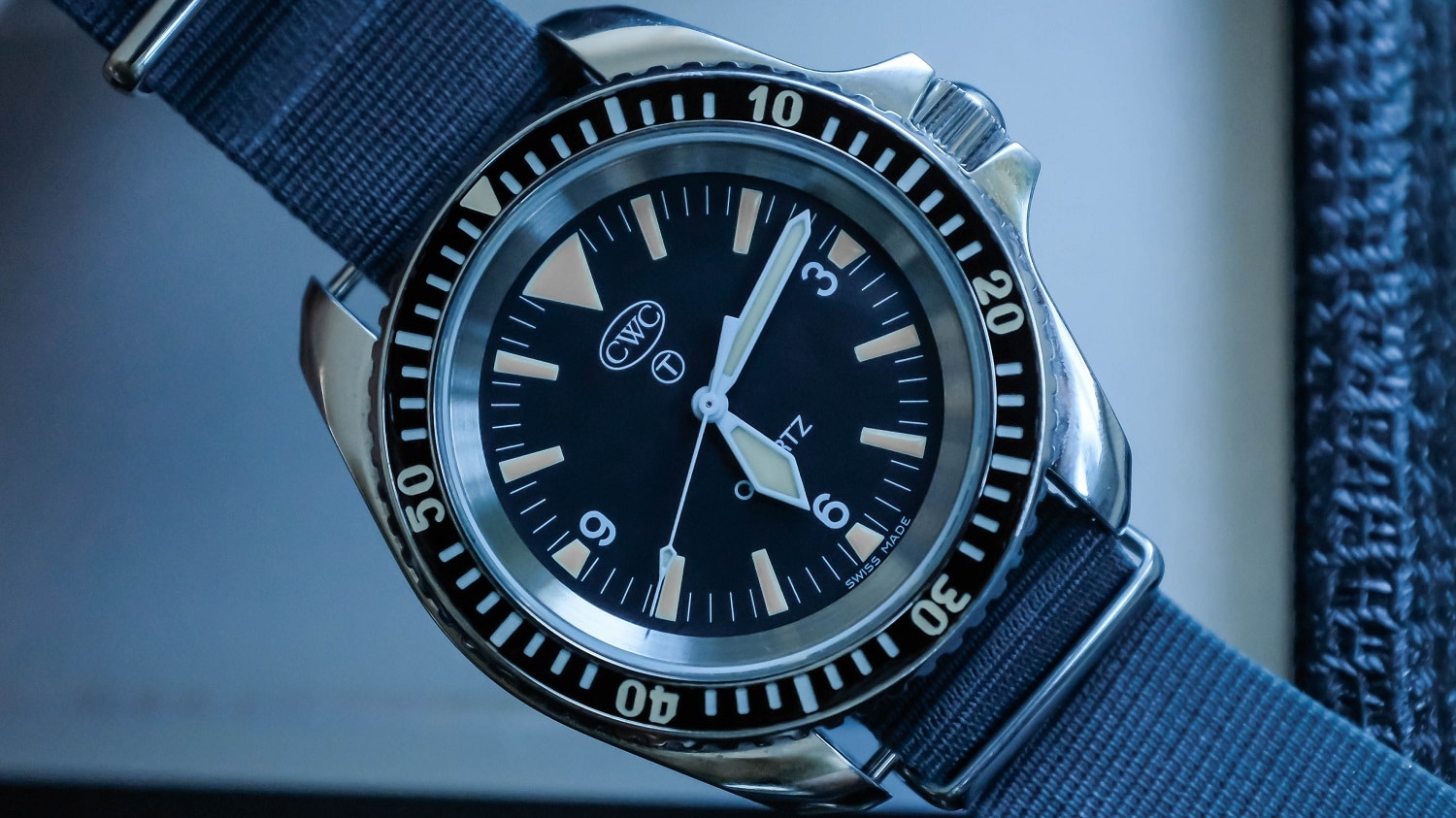
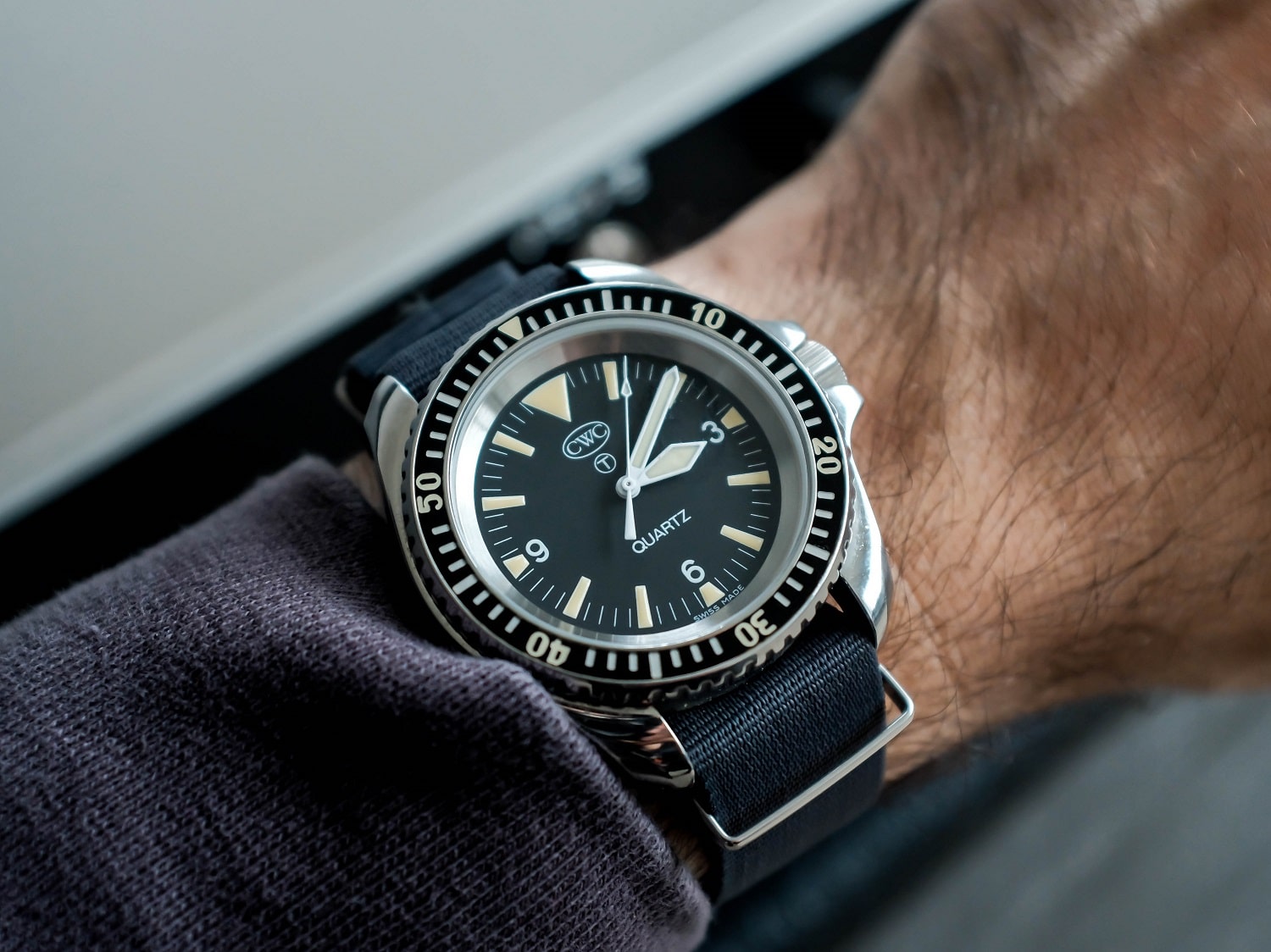
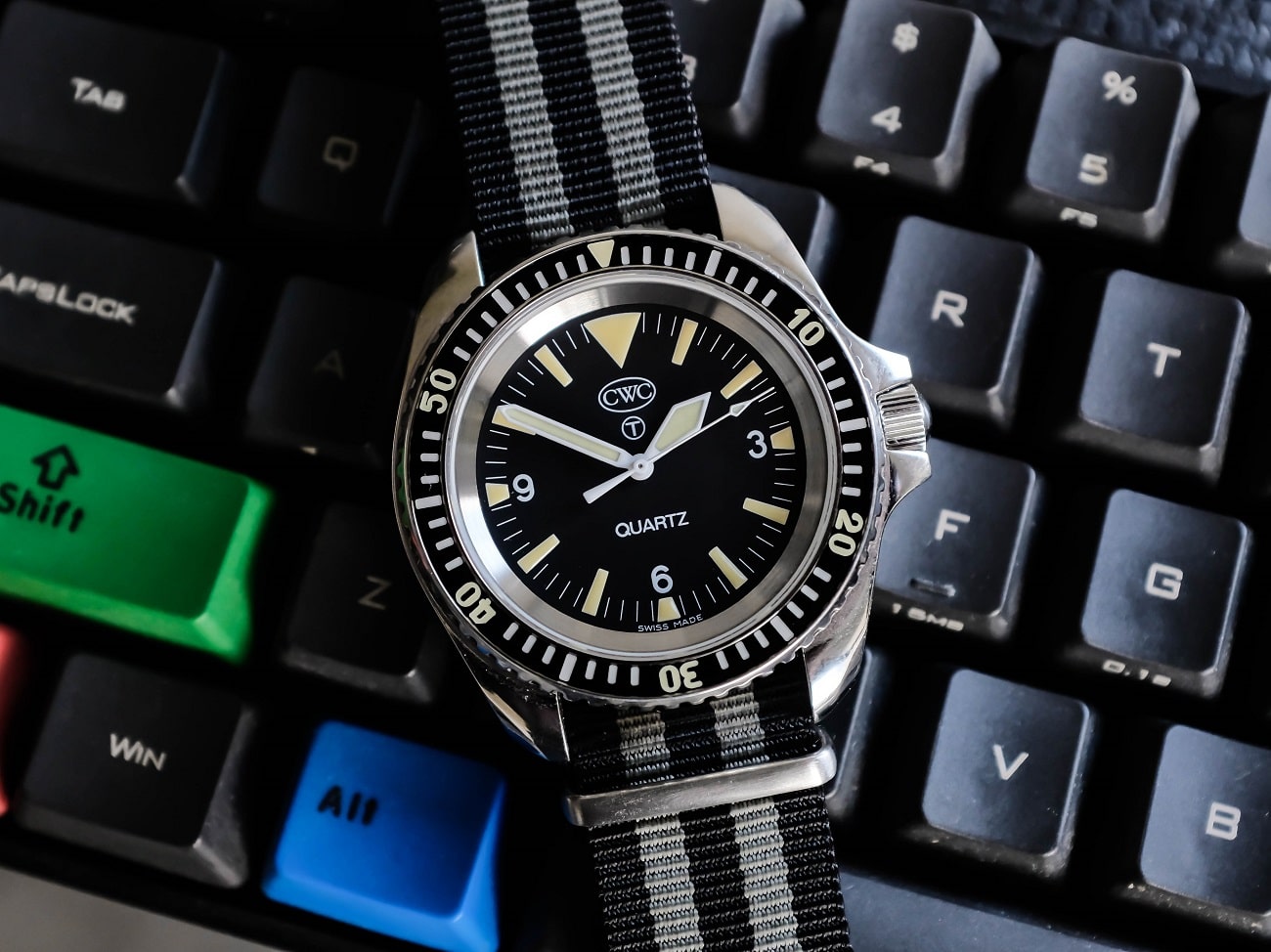
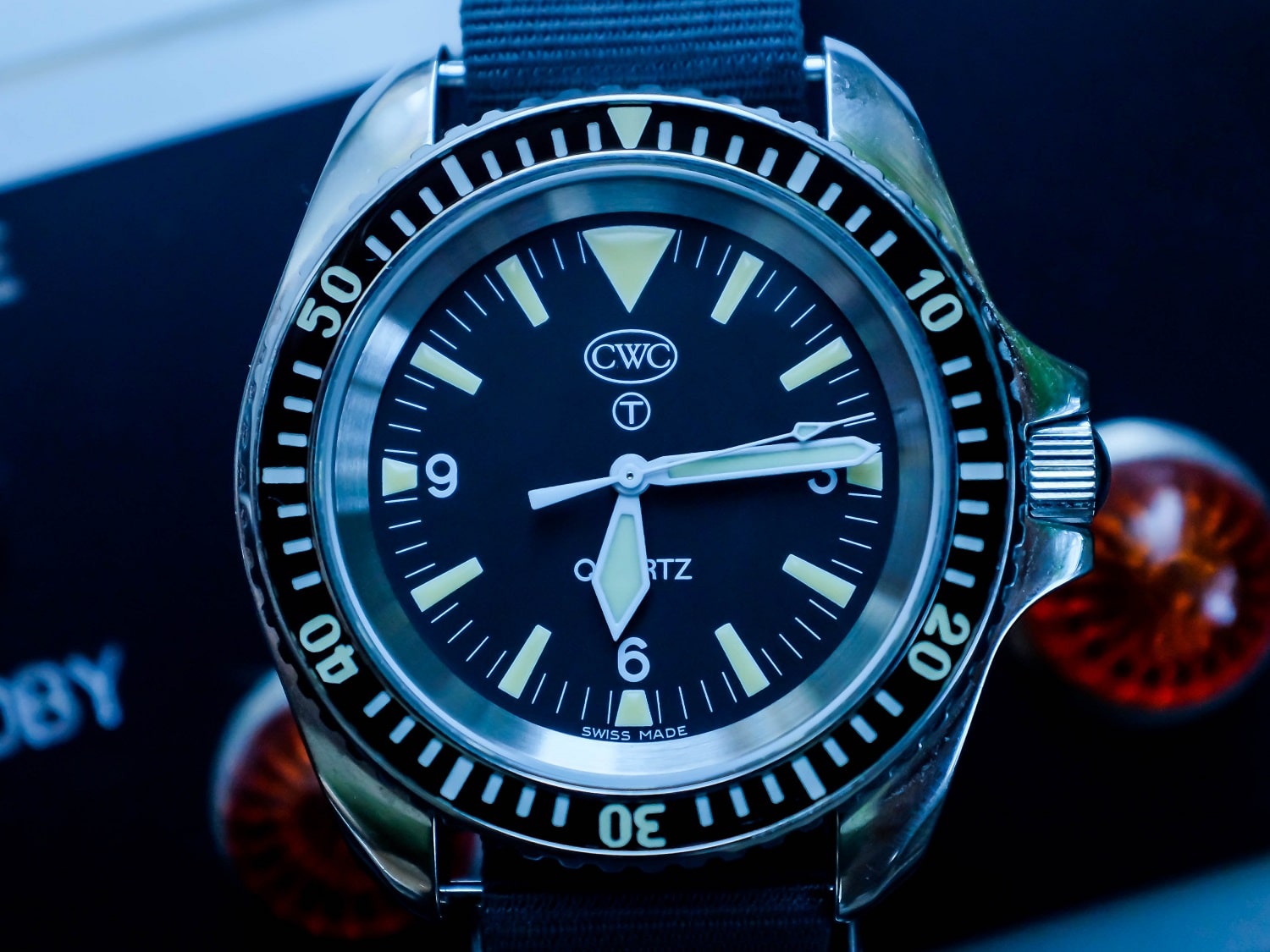
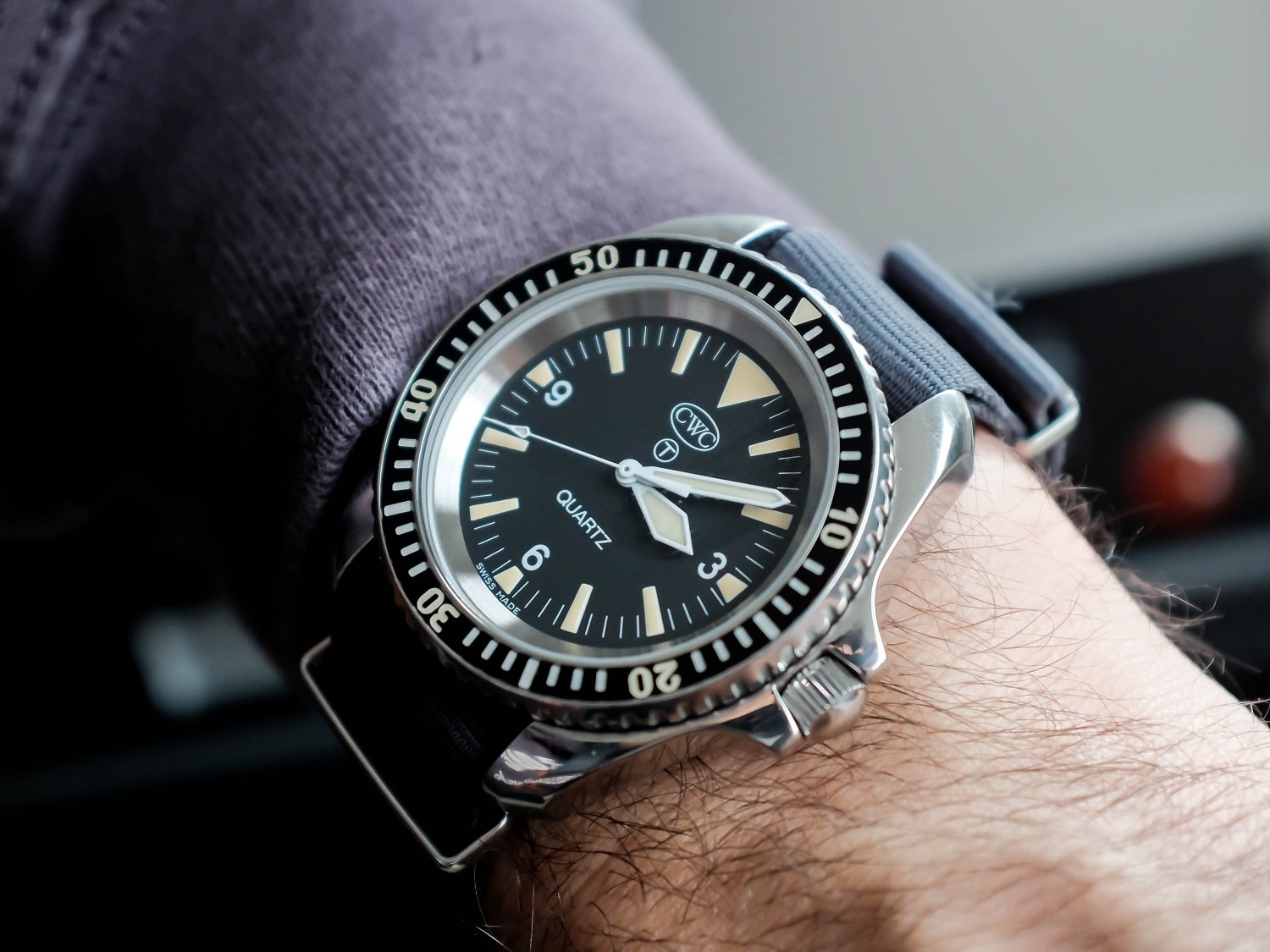
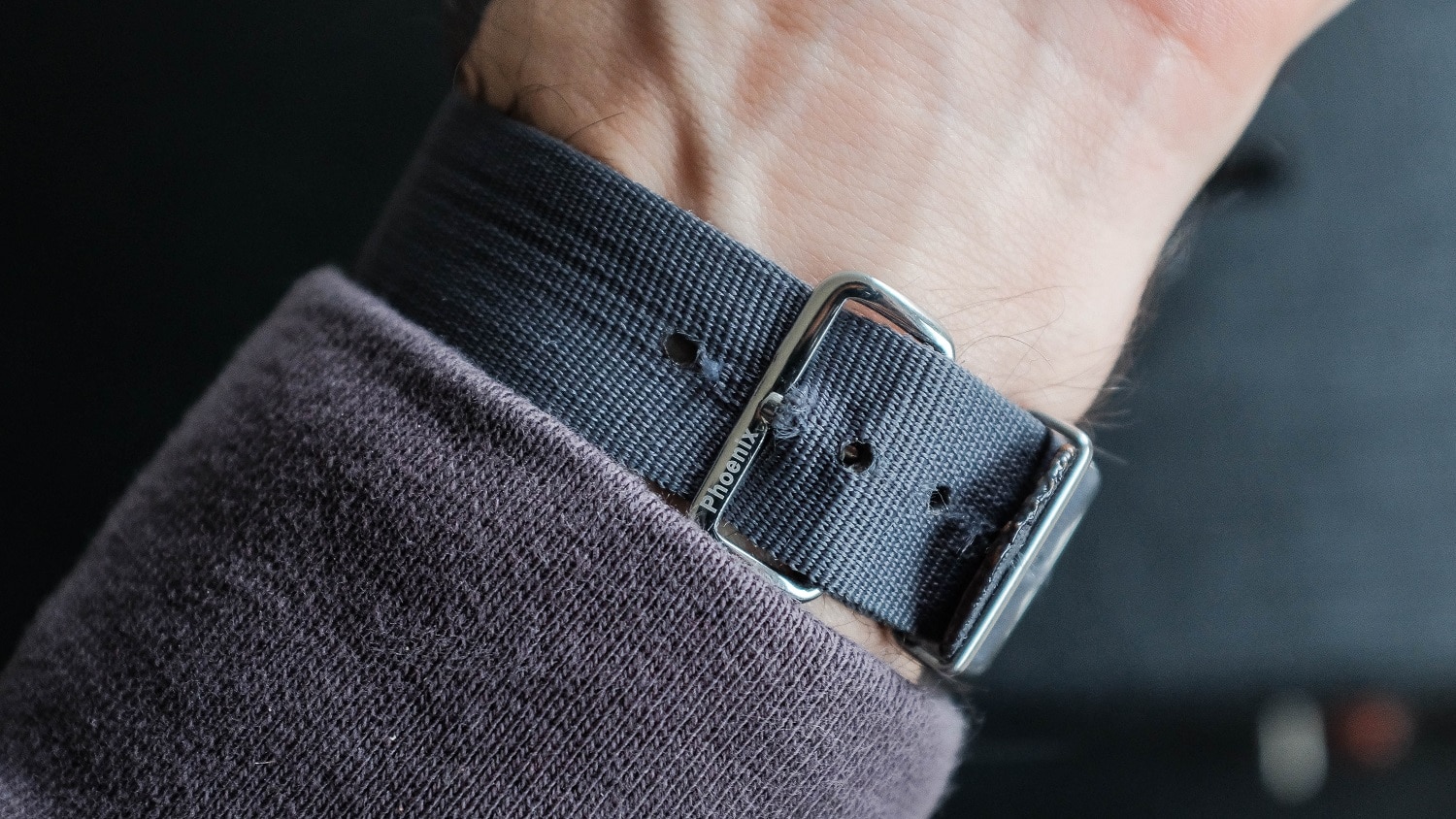
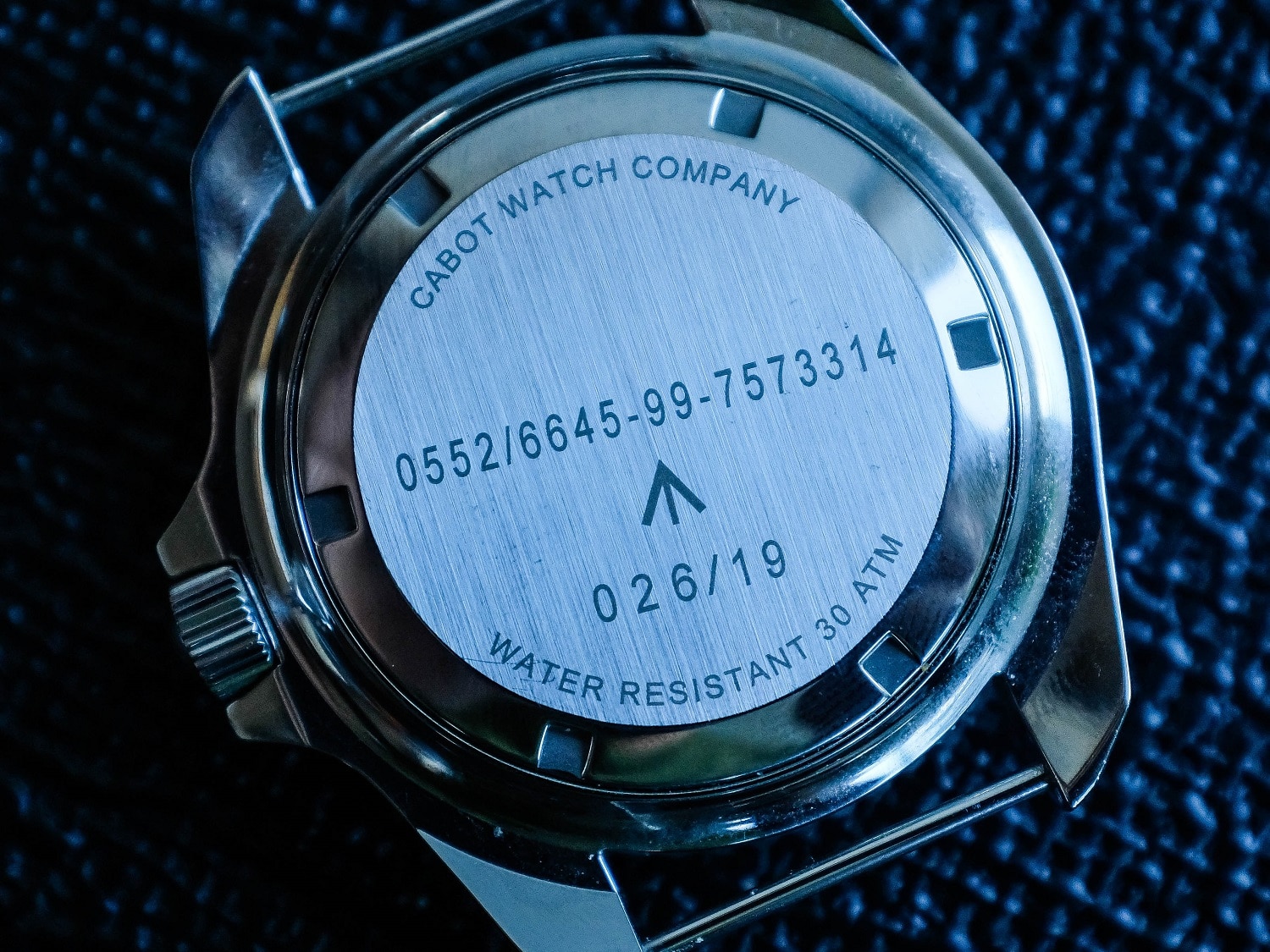

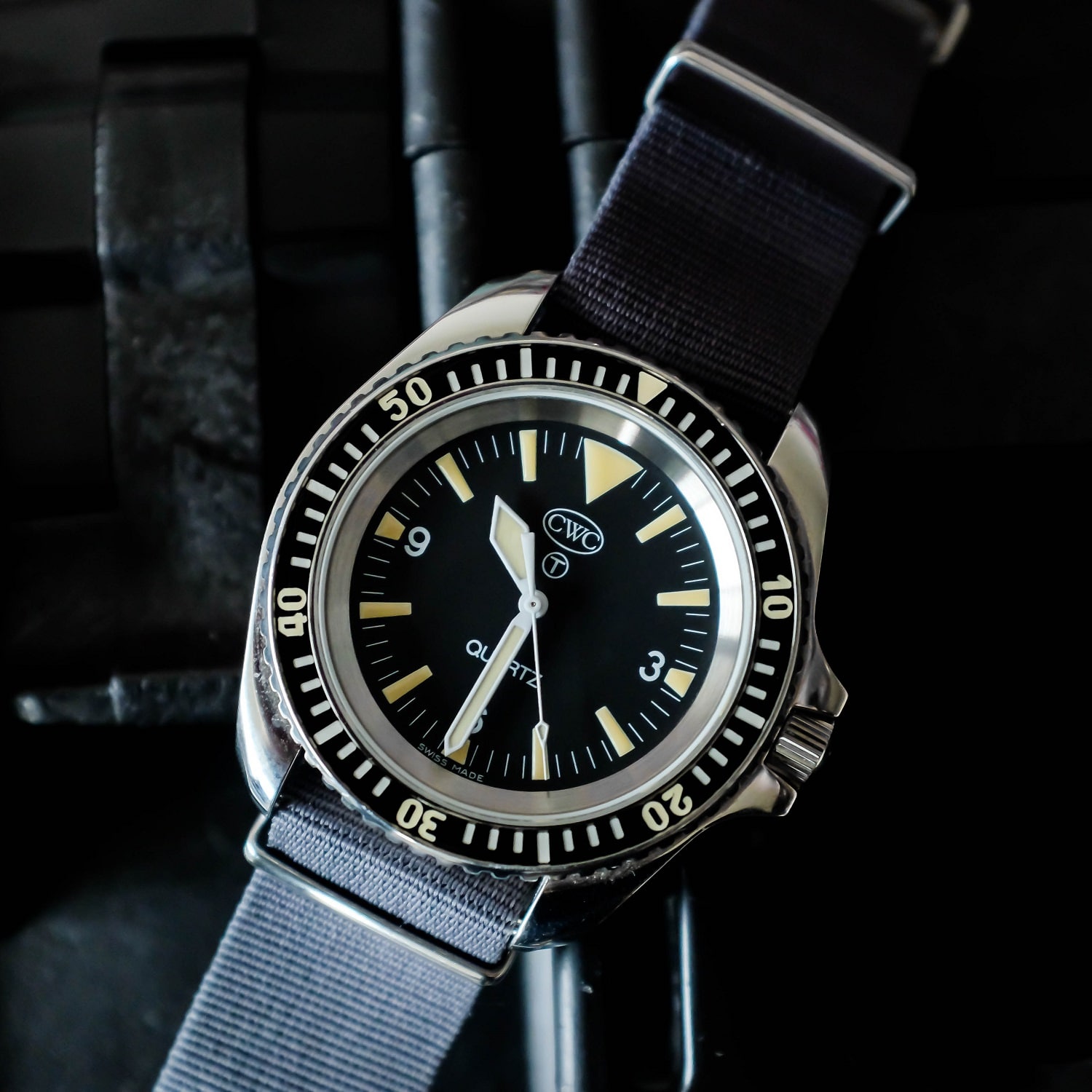
I see what you did there with the 18mm strap on the 20mm lug…And I like it. The fact that they were mostly issued with an 18mm strap was the pragmatic result of not having to stock two strap widths in the supply chain.
Exactly (: I think it’s a great look, too.
Where’s the striped strap from? Like the look with the watch
What size wrist do you have? I have a 6.75ish inch wrist and am worried that this watch will be too big.
Same wrist size as yours!
Thanks for a terrific perspective. I just got my 1983 quartz reissue and am really happy with it (have only mechanical watches, all bought before 2001, and mostly sold off except for 6 that I can’t part with). I was torn between this, and the automatic 1980 release – but went for quartz. Primary reason is that the one big reason I liquidated the majority of my collection was the utter hassle (and cost) of constant maintenance. I can crack the case and replace the battery every 4-6 years for the price of… a battery. I find myself wearing this one pretty much all the time these days.
I bought the CWC RN83 late last year. I have old wrists and wearing my Seiko Spring Drive Diver was becoming a chore. So I looked for a smaller, lighter, and less obvious watch. I pulled the trigger and it promptly arrived. It was fitted with a leather strap and looked great. My impulse control is not good so I ordered the CWC RN81 Clearance Diver as it’s older brother. It’s on my wrist as I type this note. Impulse control was abandoned, so I found a NIB CWC Arctic Diver that will arrive this week. This one will wear a WatchGecko Bond NATO strap.
I have this same model same year 019 number 031 so prob from same batch ?